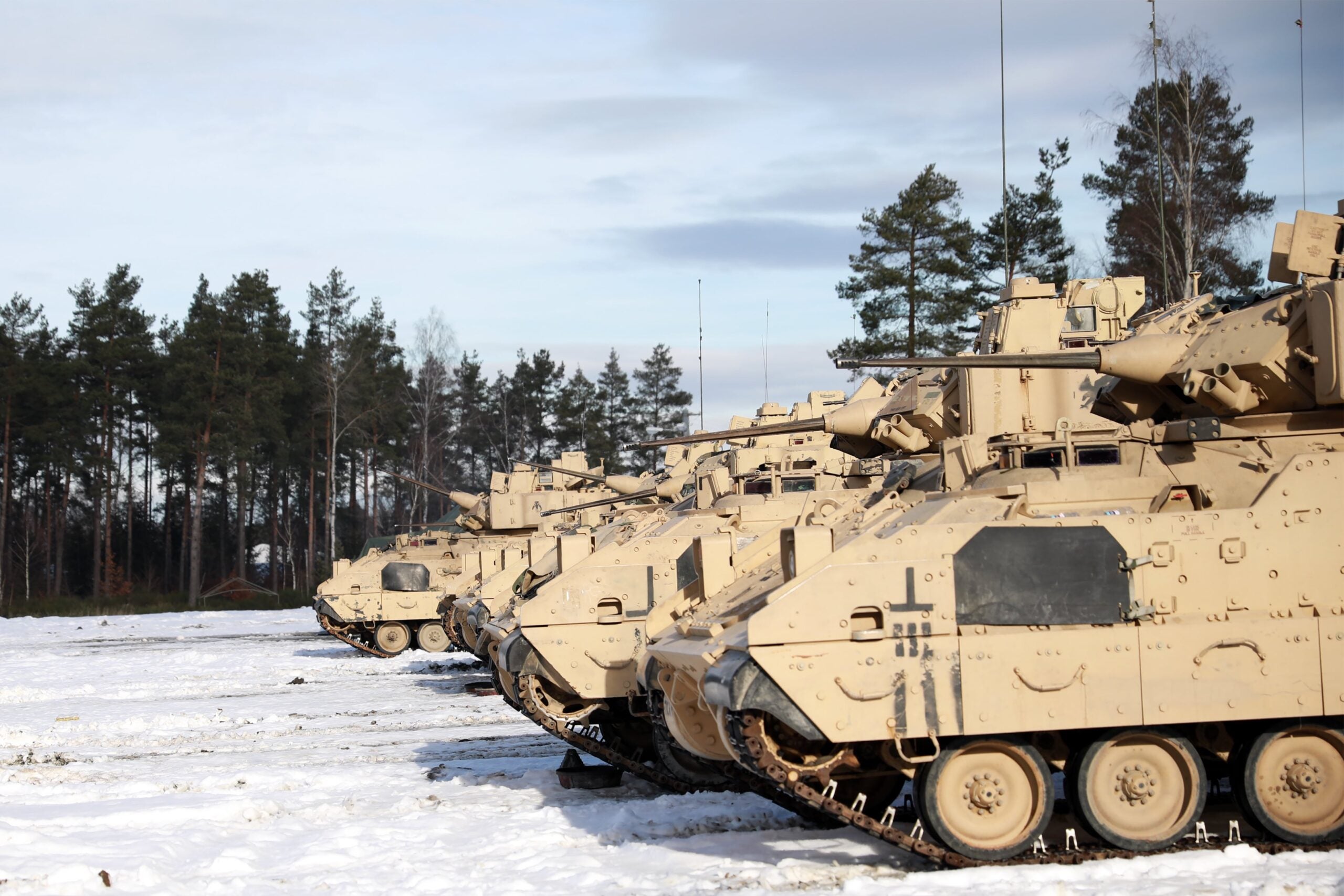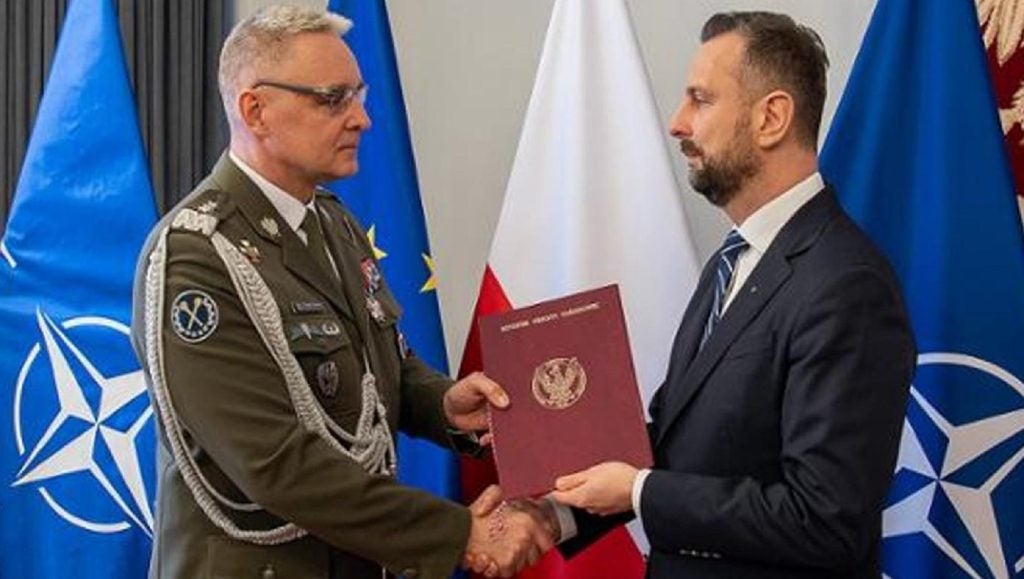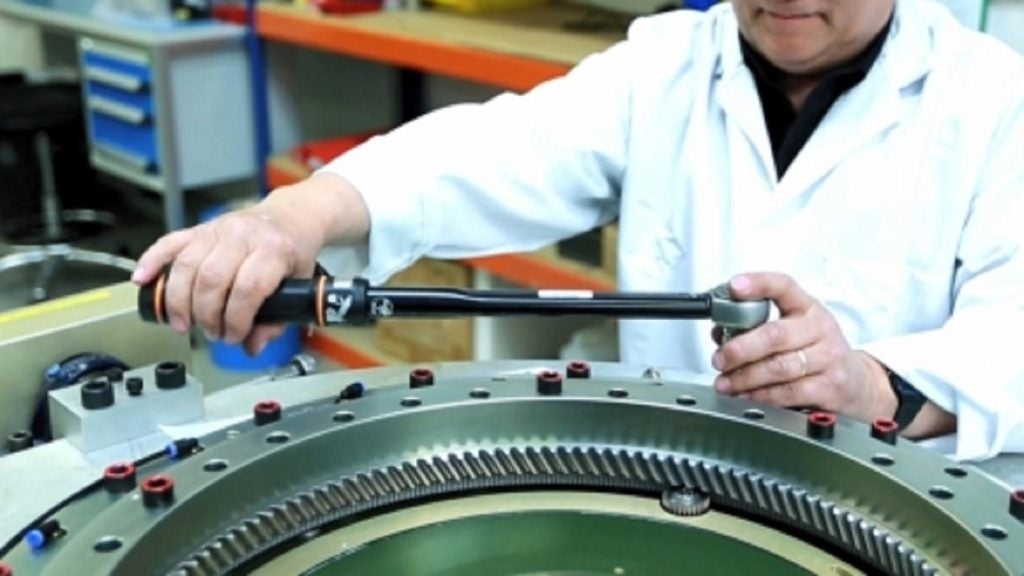
Last week, General Dynamics confirmed it had submitted an entry to the US Army’s second attempt at the OMFV competition; previously the company was the only company to deliver a prototype vehicle on time. The army scrubbed the competition and restarted it, replacing strict requirements with a looser set of characteristics for industry to meet.
Unlike some competitors, Kiernan said General Dynamics had made a conscious choice not to put an image to its OMFV bid as it would be ‘premature’ and would go against the US Army’s desire to say it had already concluded what OMFV will be.
Detailing General Dynamics entry to the competition’s current phase, Kiernan said the company had offered the army a ‘comprehensive approach’ to how it would use digital engineering processes and modular open architectures to conduct trade studies and develop a concept for what OMFV could be.
Commenting on the trade space, Kiernan said: “Programmes like ASCOD and AJAX, as well as the previous work that we did to deliver the bid sample and other investments that we’ve done help to inform our approaches by defining that available trade space so that we understand, for instance, how the capabilities of an AJAX, could be brought to bear on a solution like this and how we can use that information as we do our analysis, conduct trade studies, and come up with this balanced solution to decide whether that’s the right solution or not, as it fits into this overall balanced approach.”
Currently, the company’s proposal is focused more on how it would go about finding a solution that would fit the US Army’s need well into the future, rather than a specific platform that it believes fits the requirement.
Kiernan said the company does not currently have a base platform it is looking at, but that it does have a ‘good collection of data’ on what technology is available that could form the basis of the vehicle.
How well do you really know your competitors?
Access the most comprehensive Company Profiles on the market, powered by GlobalData. Save hours of research. Gain competitive edge.

Thank you!
Your download email will arrive shortly
Not ready to buy yet? Download a free sample
We are confident about the unique quality of our Company Profiles. However, we want you to make the most beneficial decision for your business, so we offer a free sample that you can download by submitting the below form
By GlobalData“I think we understand what the army wants in terms of a lethality package. The army doesn’t explicitly say, for example, there have to be missiles on this vehicle, but we understand the missiles that could go on this vehicle right and we understand how those might be integrated into a turret,” Kiernan said. “Without having selected – because we have simply haven’t performed the work, the work will be performed under contract to actually develop that concept – I’d say that we’re very well-positioned to understand the subsystem pieces that build up a capability like this.”
So far, General Dynamics’ OMFV team has brought on board the General Dynamics Mission Systems division to strengthen the bids command and control, battle management and cybersecurity chops.
Kiernan added: “The army’s approach is one that I think we really embrace because we believe in this program and we believe that the need for this sort of a transformative technology is required.
“And so, we fully support working with the army going forward to make this programme a success.”
The company has also partnered with Applied Intuition, which has a background in artificial intelligence and is a specialist in vehicle autonomy. AeroVironment, the maker of the Switchblade loitering munition, is also a part of the company’s OMFV team.
Kiernan said: “If you look at the sorts of technologies building the basics of his vehicle, the transformative capabilities, that then allows you to take advantage of the advanced technologies is really our approach from the beginning.
“I guess the second piece of it is our approach to the modular open systems architecture to build a vehicle architecture that is going to be able to accept future technologies, whether they are ones that we think are five years away today or 10 years or maybe haven’t even been conceived of. But making sure that the fundamental architecture of this vehicle is established in a way that the interfaces are at the right place and are able to bring in those future technologies.”
Asked how the company plans to develop a vehicle that would keep pace with technology development, Kiernan reiterated General Dynamics focus on a modular open architecture approach to the system, something he said would mean there would be space for future technologies to be onboarded and would match the US Army’s approach of not necessarily being tied to one prime contractor.
Commenting on the modular open architecture approach, Kiernan said: “They [US Army] don’t want to always be beholden to the prime contractor when they choose to integrate new technology. By establishing this open architecture, the intent would be that the army could leverage other suppliers to bring technologies onto the vehicle.
“Then the final piece of that I would say would be making sure that as you engineer this vehicle that you establish growth margins so that you have space, weight, power, computer capacity and those sorts of things so you have got excess of those available at the vehicle’s inception. Recognising that over time you always need more power, you always are going to have more of a weight burden, you have that built-in capacity to be able to accommodate those future technology insertions.”
The competition
Confirmed competitors for the current phase of the OMFV competition include BAE Systems, which manufactured the Bradley; a Rheinmetall team including Raytheon, Textron and L3 Harris, which is offering the Lynx IFV; and a team led by Oshkosh Defense including Hanwha, makers of the Redback. Defense News reported that Mettle Ops has also submitted an entry.
BAE Systems teased its bid on social media including a shadowy post of an armoured vehicle. Once edited, the image appeared to show a next-generation Bradley hull fitted what defence observers believe to be an Elbit UT30MK2 turret.
We’re ready to answer the @USArmy‘s call for an advanced armored vehicle to support mechanized infantry operations through the Optionally Manned Fighting Vehicle (#OMFV) program. Stay tuned as we design a combat system that will meet our Soldiers’ needs on future battlefields. pic.twitter.com/JZfc5uifSV
— BAE Systems, Inc. (@BAESystemsInc) April 15, 2021
Commenting on its proposal, Oshkosh Defense vice president and general manager of army and marine corps programmes Pat Williams said: “Oshkosh Defense submitted a proposal for the digital design phase of the OMFV competition.
“We have built a consortium of experienced and innovative industry leaders who bring technical diversity and maturity to our team and we’re confident that we will deliver the next-generation infantry fighting vehicle the American soldier clearly deserves.
Army Technology has contacted BAE Systems for comment, but the company had yet to reply at the time of publishing.






